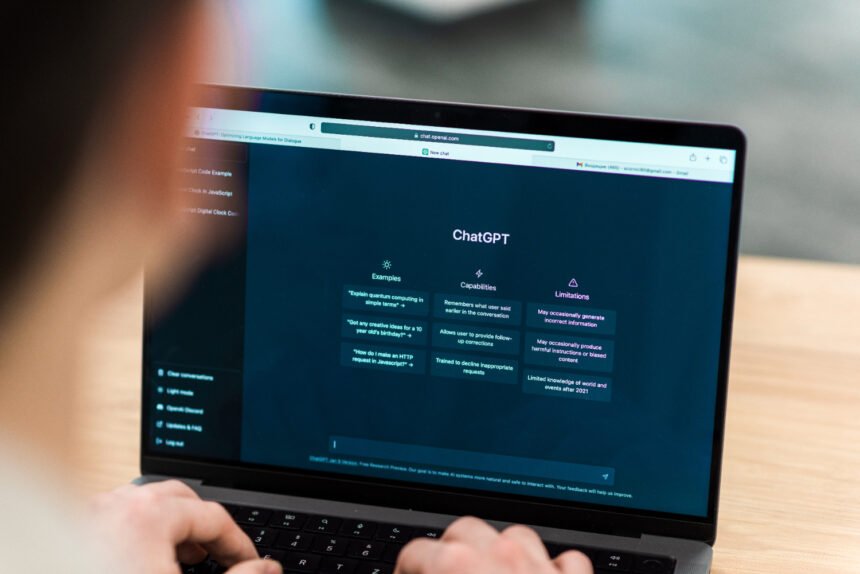Starting a blog can feel overwhelming for many people. Where do you even begin? What do you write about? How do you make it interesting? Thankfully, ChatGPT, a powerful AI assistant, can solve most of that and be your secret weapon.
ChatGPT isn’t just for chatting. It’s a versatile tool that can help you at every stage of the blogging process. Think of it like having a personal writing assistant. It can brainstorm ideas, refine your writing, and even help you reach a wider audience.
Now, to get the most out of ChatGPT, we’ve categorized 10 beginner-friendly prompts that should make the journey to start a bit easier. These prompts are designed to be easy to use and effective.
1. Idea Generation & Planning

“Suggest 5 blog post ideas related to [topic].”
Why it’s helpful: Sometimes, the hardest part is coming up with something to write about. This prompt helps you overcome that dreaded “blank page” syndrome. ChatGPT can generate a variety of ideas based on your chosen topic. It’s like having a brainstorming session with someone you know personally.
“Write a blog post outline with headings and subheadings for [topic].”
Why it’s helpful: Outlines provide structure. They act as a roadmap for your writing. This prompt helps you organize your thoughts and ensure your blog post flows logically. It’s like creating a blueprint for your house before you start building.
2. Content Creation & Optimization

“Write a blog post introduction about [topic], targeting [audience].”
Why it’s helpful: The introduction is crucial. It grabs the reader’s attention and sets the tone for the rest of the post. ChatGPT can help you craft an engaging introduction that hooks your audience from the very first sentence.
“Create an attention-grabbing headline for a blog post about [topic].”
Why it’s helpful: A compelling headline is essential for attracting readers. It’s the first thing they see, so it needs to be enticing. ChatGPT can generate a variety of headline options, helping you choose the most impactful one. It’s like choosing the perfect title for a movie.
“Write a convincing blog post conclusion encouraging readers to take action.”
Why it’s helpful: The conclusion summarizes your main points and leaves a lasting impression. ChatGPT can help you craft a strong conclusion that encourages readers to engage with your content, such as leaving a comment or subscribing to your blog.
“Generate a list of relevant keywords for a blog post about [topic].”
Why it’s helpful: Keywords are important for search engine optimization (SEO). They help people find your blog posts when they search for information online. ChatGPT can help you identify relevant keywords that will improve your blog’s visibility.
3. Content Enhancement & Refinement

“Rewrite this sentence to make it more concise and engaging: [sentence].”
Why it’s helpful: Even the best writers can sometimes get stuck in a rut. This prompt helps you refine your writing and make it more impactful. ChatGPT can help you rephrase sentences to make them more concise, clear, and engaging.
“Proofread and edit this blog post for grammar and clarity: [link to blog post].”
Why it’s helpful: Proofreading is essential for catching any errors in grammar, spelling, and punctuation. ChatGPT can act as a second set of eyes, helping you ensure your blog post is polished and professional.
“Summarize this article in 50 words: [link to article].”
Why it’s helpful: This prompt helps you develop your summarizing skills. It can also be useful for creating social media posts or teasers for your blog posts.
4. Accessibility & Reach

“Translate this blog post into [language]: [link to blog post].”
Why it’s helpful: This prompt allows you to reach a wider audience by translating your blog posts into other languages. This can be especially helpful if you’re targeting an international audience.
Using ChatGPT Effectively
Remember, ChatGPT is a tool. It’s there to assist you, not to do the work for you. The best results come from providing specific and clear instructions.
For example, instead of saying, “Write a blog post about dogs,” try “Write a blog post about the benefits of adopting a rescue dog, targeting dog lovers aged 25-35.” The more specific your prompt, ChatGPT’s response will be more helpful.
Conclusion: Experiment and Iterate
Don’t be afraid to experiment with different prompts and see what works best for you. ChatGPT is constantly learning and evolving, so its capabilities are constantly expanding. Experiment with different phrasing, levels of detail, and even different tones in your prompts.
Treat it as a partner in your writing process, iterating and refining your requests until you achieve the desired outcome. The more you know about what you are planning to write, the better. Good thing you don’t have to start blogging alone.
Enjoyed this post? Share it with others! For more blogging and affiliate marketing tips, subscribe to our newsletter and never miss an update.
Discover more from The Blog Channel
Subscribe to get the latest posts sent to your email.









